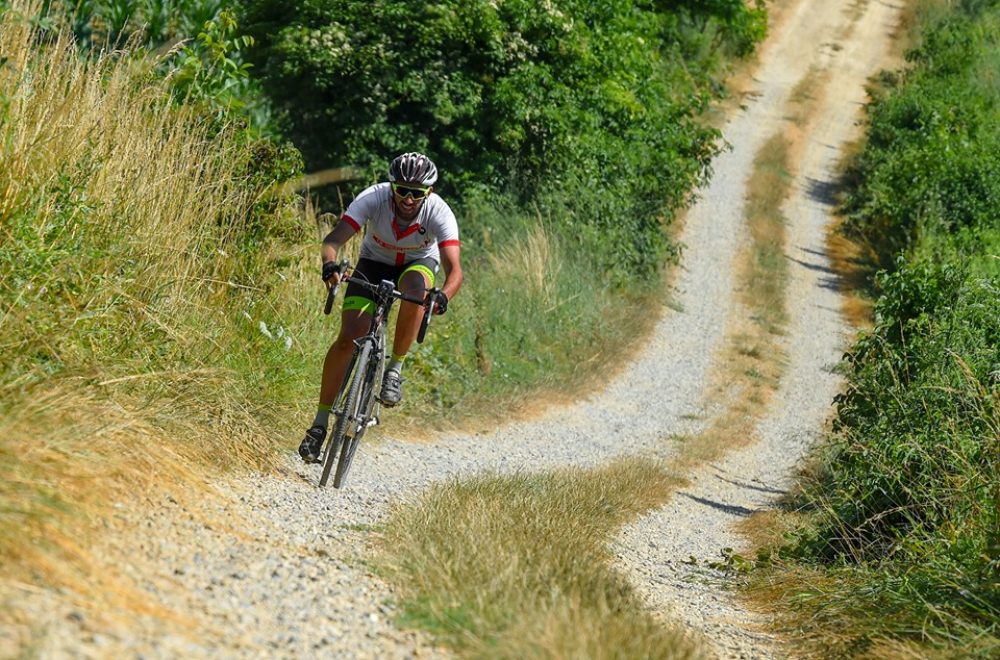When the Emperor Otto became aware of it, he wanted to meet the young brave and forgave the two lovers. In a fit of generosity, he granted Aleramo so much land he had managed to ride across without stopping. The territory that he rode across is now Monferrato, whose name derives from mun (brick) and frà (shoe), ie the bricks used to shoe the horses that Aleramo, as evidence of having traveled across such territories, had thrown behind himself. However, there are several variations of the legend, such as the one according to which Aleramo obtained the territory that he could ride across in three days and three nights, and that the name Monferrato comes from having used a brick (MON) as a hammer, to shoe the horse that had lost a shoe (RES) during the race.
It’s hard to say which one is Aleramo’s true story, and what is legend. For sure, he is one of the most mysterious, fascinating and unknown characters of history. The remains of Aleramo rest today in the parish of Grazzano Badoglio
22 to 26 July: discover the Monferrato by bike with Marco Saligari
Information and reservations: +39 339 8833626 – info@bikecomedy.it
Monferrato named as World Heritage Site by UNESCO
Doha, 22 June – Monferrato was inscribed as a natural site by the World Heritage Committee, which is meeting in Doha (Qatar) under the Chair of Sheikha Al Mayassa Bint Hamad Bin Khalifa Al Thani. The Committee also inscribed sites in France, Israel, Italy,Turkey and the United States this afternoon.
VIDEO: the Monferrato Casalese https://www.youtube.com/watch?v=HqbSLIneWew
http://whc.unesco.org/en/list/1390/
Vineyard Landscape of Piedmont: Langhe-Roero and Monferrato (Italy) covers five distinct wine-growing areas with outstanding landscapes and the Castle of Cavour, an emblematic name both in the development of vineyards and in Italian history. It is located in the southern part of Piedmont, between the Po River and the Ligurian Appenines, and encompasses the whole range of technical and economic processes relating to the winegrowing and wine making that has characterized the region for centuries. Vine pollen has been found in the area dating from the 5th century BC, when Piedmont was a place of contact and trade between the Etruscans and the Celts; Etruscan and Celtic words , particularly wine-related ones, are still found in the local dialect. During the Roman Empire, Pliny the Elder mentions the Piedmont region as being one of the most favourable for growing vines in ancient Italy; Strabo mentions its barrels
22 to 26 July: discover the Monferrato riding with Marco Saligari.
Information and reservations +39 339 8833626 – info@bikecomedy.it
Il Monferrato eletto dall’Unesco patrimonio mondiale dell’umanità
VIDEO https://www.youtube.com/watch?v=HqbSLIneWew
Le colline di Monferrato, Langhe e Roero con i loro dolci paesaggi modellati dall’azione combinata della natura e dell’uomo, sono da oggi patrimonio mondiale dell’Unesco. La candidatura dei Paesaggi Vitivinicoli del Piemonte è stata accolta dal comitato permanente del
Patrimonio Materiale dell’Unesco riunito a Doha, in Qatar.
L’Italia – prima al mondo per numero di siti riconosciuti dall’organizzazione delle Nazioni Unite per l’educazione, la scienza e la cultura, ora 50 – iscrive per prima nelle World Heritage List dei luoghi più belli del pianeta un’area geografica premiata per la cultura legata al vino. Neppure le rinomate colline francesi dove si producono lo Champagne od il Bordeaux ci sono ancora arrivate.
Il Piemonte è arrivata al traguardo con una candidatura nata dieci anni fa, a Canelli, nelle cantine che sono chiamate le ‘cattedrali sotterraneè, decollata nel 2008 con il protocollo d’intesa firmato da Regione, Province di Alessandria, Asti e Cuneo e dal ministero dei Beni Culturali. Strada facendo si è poi aggiunto il ministero delle Politiche Agricole.
Dei paesaggi vitivinicoli del Piemonte fanno parte tre aree nelle Langhe, due nell’Alto Monferrato, un’altra, infine, nel Basso Monferrato. Sono le colline dove i doni della natura ed il sapiente lavoro di generazioni e generazioni di uomini, ogni anno portano a staccare dalle vigne i grappoli d’uva che poi diventeranno Barolo, Barbaresco, Asti spumante, noti in tutto il mondo, ma anche altri vini molto amati. E dove la terra è generosa dei tartufi più pregiati. Colline raccontate da grandi scrittori – Pavese, Fenoglio, Pavese – custodi di straordinarie bellezze e di grandi tradizioni legate alla terra, di storiche cantine e castelli.
Sono sei i territori d’eccellenza entrati nell’Heritage List dell’Unesco: la Langa del Barolo, il Castello di Grinzane Cavour, le Colline del Barbaresco, Nizza ed il Barbera, Canelli e l’Asti spumante, il Monferrato degli Infernot. Un’area in tre province, che copre un’estensione di 10.789 ettari in 29 Comuni. Il dossier piemontese è stato curato da Siti, associazione fondata dal Politecnico di Torino con la Compagnia di San Paolo.
La strada verso il sì dell’Unesco alla candidatura piemontese era stata aperta, a fine aprile, dal parere positivo dell’Icomos, l’organismo indipendente che valuta le candidature per la lista Unesco: «I paesaggi vitivinicoli di Langhe, Roero e Monferrato – sono unici per la sua armonia e per l’efficace bilanciamento tra qualità estetiche del paesaggio rurale, architetture e costruzioni storiche, ed antica e autentica tradizione della viticoltura» (Ansa).
Informazioni e prenotazioni: +39 339 8833626 – info@bikecomedy.it
L’Osservatorio astronomico di Odalengo Piccolo: per salirci le stelle le vedi prima
Strapponi al 20% per chi vuole provarci
https://www.youtube.com/watch?v=r_vwuXPdf6E
Quanti watt pensi di poter scaricare sul Muro di Casorzo Alto?
Bike Comedy Cycling Tours. http://www.bikecomedy.it; info@bikecomedy.it

